In the ever-evolving landscape of automotive engineering, safety remains a paramount concern for manufacturers, drivers, and passengers alike. Modern vehicles are no longer just modes of transport; they are sophisticated cocoons of technology designed to prevent accidents and mitigate harm when collisions are unavoidable. The continuous innovation in driver-assistance technology has fundamentally reshaped how we perceive and experience vehicle safety, making cars of all sizes significantly safer than ever before.
Automakers such as Honda, Mazda, and Subaru have forged strong reputations for delivering reliable vehicles brimming with safety features that are accessible to a broad market. Concurrently, luxury brands like BMW, Tesla, and Volvo have consistently been at the forefront of integrating cutting-edge safety technologies, from automatic emergency braking to forward collision warning systems. This dedication across the industry means that advanced safety is becoming a standard expectation, not just a premium add-on.
As car manufacturers persist in their pursuit of developing and implementing the latest safety features, the future promises even safer journeys for everyone on the road. We are taking a comprehensive look at some of the most crucial safety innovations that have become standard in many of today’s leading vehicles, offering drivers and passengers an enhanced sense of security and peace of mind.
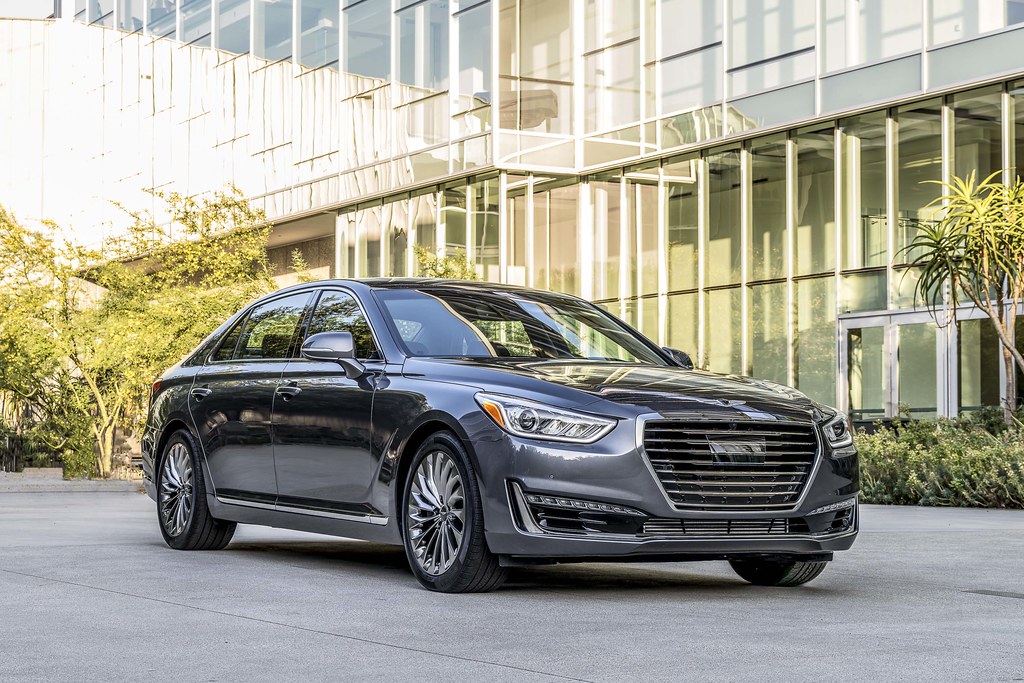
1. Automatic Emergency Braking (AEB)
Automatic Emergency Braking, often referred to as AEB, is a groundbreaking safety system that plays a pivotal role in preventing or mitigating frontal collisions. It operates by utilizing an array of sensors, radars, and cameras to constantly monitor the road ahead, actively searching for potential obstacles such as other vehicles or pedestrians. This technology is a cornerstone of advanced driver-assistance systems across many brands.
Honda’s Collision Mitigation Braking System (CMBS), a key feature within their Honda Sensing® package, exemplifies this technology. The system is designed to detect potential collisions using front-mounted sensors. If a collision is deemed imminent, the system does not merely observe; it takes action by alerting the driver with both audible and visual warnings, prompting immediate intervention.
Beyond just warnings, CMBS is programmed to automatically apply brake pressure to either avoid the impact entirely or significantly reduce its severity. This proactive braking capability can be the difference between a serious accident and a near miss, especially in situations where a driver’s reaction time might be compromised. Honda Sensing® also includes the ability to prevent sudden acceleration when an obstacle is detected, further enhancing collision avoidance.
Mazda’s i-ACTIVSENSE® suite incorporates a similar function known as Smart Brake Support. This technology intelligently detects the distance to objects or vehicles in front of the car. It not only provides visual and audible alerts to warn the driver to brake but, under certain conditions, can even apply the brakes autonomously to avoid or mitigate collisions. This feature is particularly beneficial in congested urban environments where sudden stops are common and reaction times are often minimal, reducing the stress of city driving.
Read more about: The Raw Truth: 10 Cars That Aced & Failed Crash Tests — Where Engineering Triumph Meets Genuine Disappointment

2. Lane Keeping Assist System (LKAS)
The Lane Keeping Assist System (LKAS) is a sophisticated technology designed to help drivers maintain their vehicle’s position within its designated lane, thereby preventing accidental lane departures. These systems are crucial for long-distance driving and reducing driver fatigue, enhancing overall road safety. They often work in conjunction with cameras and sensors to accurately perceive lane markings.
Honda Sensing® includes a robust Lane Keeping Assist System (LKAS) that utilizes a camera to meticulously sense lane lines on the road. Once these lines are identified, the system intelligently takes control, making automatic, subtle adjustments to the steering. The primary goal is to keep the vehicle precisely centered within its lane, minimizing the risk of inadvertently drifting into adjacent lanes or off the road entirely.
Ford vehicles, such as the Explorer SUV, are also equipped with advanced lane-keeping technology. This system actively detects the lines of the lane and promptly displays alerts on the dashboard if the vehicle begins to stray. It provides immediate feedback to help drivers maintain their trajectory, ensuring they stay on the intended path. This technology is designed to be highly intuitive, acting as a vigilant co-pilot.
The Ford Explorer’s lane-keeping technology offers a dual approach to safety by both warning drivers of potential lane wandering and assisting them in correcting their course. This constant monitoring and gentle intervention greatly contribute to safer driving, particularly during monotonous stretches of highway or in challenging weather conditions where visibility of lane markings might be compromised.
Read more about: Unleashing Performance, Ensuring Protection: 12 Sports Cars Where Speed Meets Stellar Safety Ratings
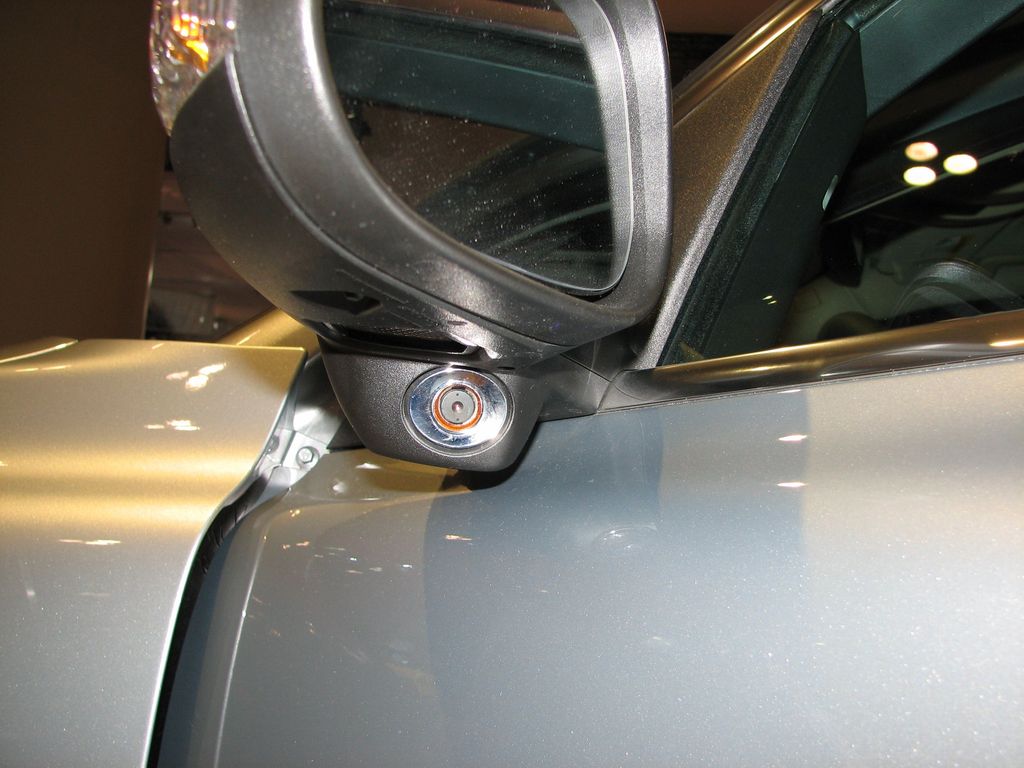
3. Blind-Spot Monitoring (BSM) / Blind-Spot Collision-Avoidance Assist (BCA)
Blind spots are notoriously hazardous areas around a vehicle where other cars, motorcycles, or even pedestrians can become invisible to the driver using conventional mirrors. Blind-Spot Monitoring (BSM) systems are engineered to address this critical safety concern, providing an extra set of eyes to detect unseen dangers and significantly reduce the risk of collisions during lane changes or merging maneuvers.
Ford vehicles, including the Explorer SUV, integrate effective blind-spot monitoring systems. These systems typically use radar or ultrasonic sensors to continuously scan the areas adjacent to and slightly behind the vehicle, which are often obscured from the driver’s view. When a vehicle is detected in these blind spots, visual indicators illuminate in the side mirrors, serving as a clear and immediate warning to the driver.
Hyundai’s SmartSense Technology takes blind-spot protection a step further with its Blind-Spot Collision-Avoidance Assist (BCA) system. This system not only provides clear visual and audible alerts when a vehicle is detected in the driver’s blind spot but also offers active intervention. This means that merely being aware of a blind spot isn’t the only safeguard; the system can actively help prevent a collision.
For instance, if a potential collision is detected while the driver’s turning signal is on, indicating an intention to change lanes, Hyundai’s BCA system is capable of initiating active avoidance steering maneuvers. Furthermore, in certain scenarios, it can automatically apply the front brake before a lane change. This advanced capability aims to steer the vehicle out of harm’s way, showcasing a highly proactive approach to blind-spot dangers and significantly enhancing overall safety during dynamic driving situations.
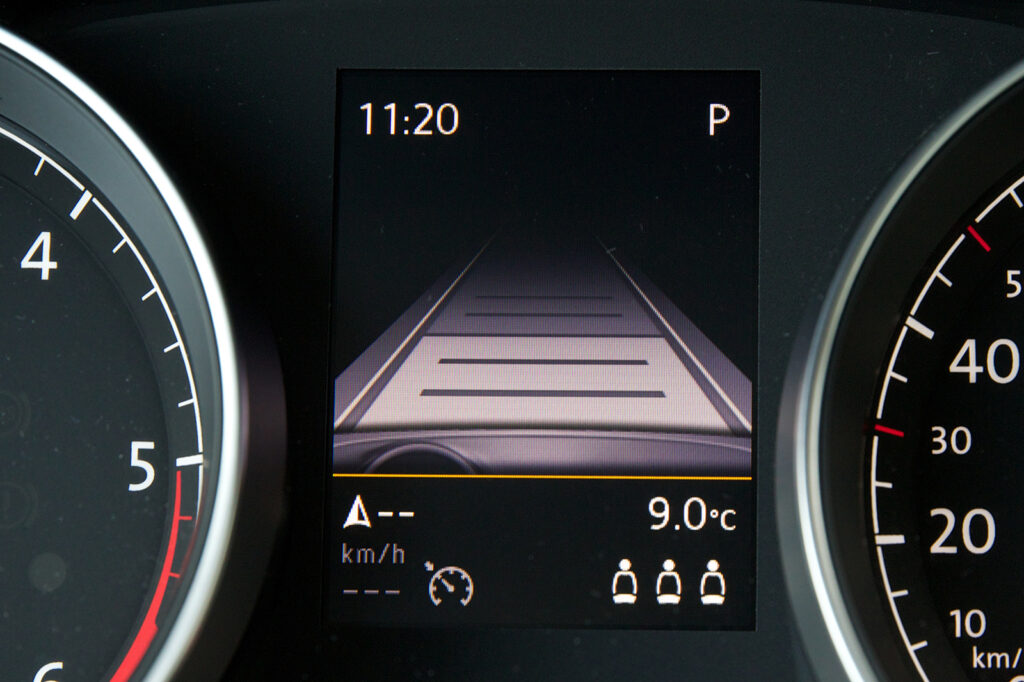
4. Adaptive Cruise Control (ACC) / Smart Cruise Control (SCC) / Radar Cruise Control
Adaptive Cruise Control (ACC) represents a significant evolution of the traditional cruise control system, transforming it from a simple speed-holding mechanism into an intelligent driver assistance feature. These systems are designed to enhance convenience and safety by automatically adjusting the vehicle’s speed to maintain a safe following distance from the car ahead, reducing the need for constant driver input on the accelerator and brake pedals.
Mazda’s i-ACTIVSENSE® suite includes radar cruise control, a prime example of this technology. With this system, drivers can preset a desired speed, much like conventional cruise control. However, unlike its predecessor, radar cruise control actively uses radar sensors to monitor the traffic flow in front of the vehicle. If the system detects a slower-moving vehicle ahead, it will automatically reduce the car’s speed to maintain a safe and predetermined following distance.
Hydundai’s Smart Cruise Control (SCC) operates with similar intelligence, utilizing advanced radar sensors to monitor the distance from the vehicle in front. This system doesn’t just slow down; it can automatically engage the brakes to reduce speed and, once the path is clear, accelerate back to the preset speed. This makes SCC particularly effective in managing fluctuating traffic conditions.
A key benefit of these adaptive systems is their ability to seamlessly handle stop-and-go traffic situations. Hyundai’s SCC, for example, is specifically designed to monitor and adapt to congested areas, automatically bringing the vehicle to a complete stop if necessary and then resuming acceleration when traffic moves again. This significantly reduces driver stress and fatigue, making driving in heavy traffic much more comfortable and safer by minimizing manual input.
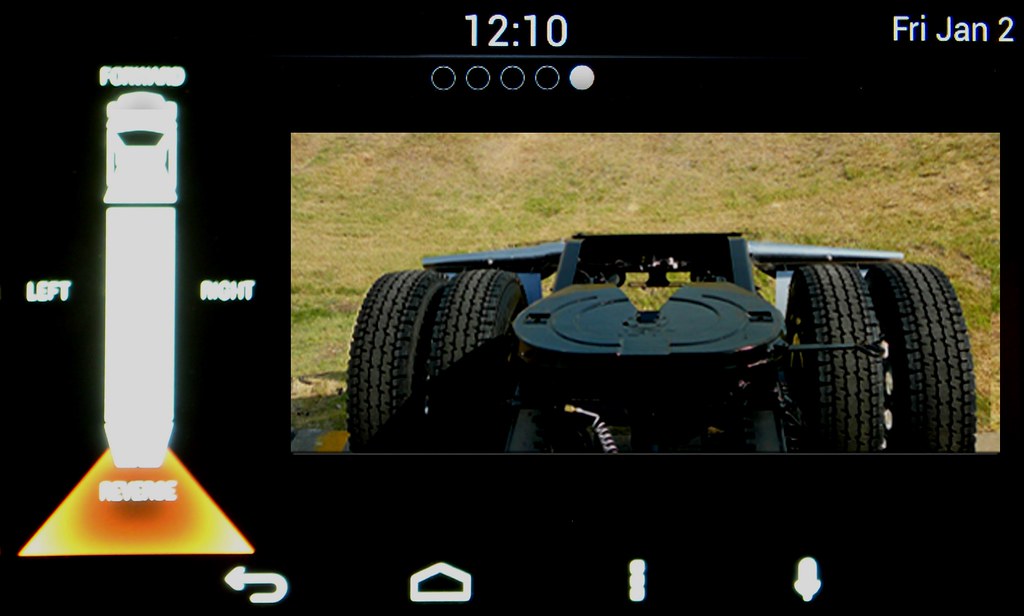
5. Rearview Cameras and Parking Assistance Systems
Rearview cameras have revolutionized parking and low-speed maneuvering by providing drivers with a clear, wide-angle view of the area directly behind their vehicle. This technology drastically reduces the risk of backing into unseen obstacles, children, or pets, which are common causes of parking lot accidents. What was once an optional luxury is now a standard and indispensable safety feature.
Many modern SUVs, such as the Ford Explorer, come equipped with essential parking assistance features, including sensors and a reverse camera. The reverse camera projects a live feed onto the vehicle’s central display screen, offering a critical visual aid when backing up. This visual input, combined with audible warnings from parking sensors, provides comprehensive situational awareness for drivers during intricate parking maneuvers in various environments, from crowded urban streets to tight garages.
Hyundai’s SmartSense Technology takes parking assistance to an advanced level with its Remote Smart Parking Assist System (RSPAS). This sophisticated system employs a combination of front radar sensors and a windshield-mounted camera. These components work in tandem to precisely detect objects in front of the vehicle, offering an enhanced layer of protection not only during traditional parking but also in more automated scenarios.
If the RSPAS determines that a collision is possible with an detected object while parking or maneuvering, the system is programmed to automatically apply the brakes. This autonomous braking capability serves as a critical fail-safe, intervening swiftly to prevent impacts that might otherwise occur due to driver oversight or misjudgment. The integration of cameras and sensors across these systems underscores a commitment to minimizing parking-related incidents and enhancing safety in confined spaces.
Read more about: Oops, They Did It Again: These 10 Celebs Got Busted For Speeding & License Suspensions (And You Won’t Believe Some of the Stories!)

6. Tire-Pressure Monitoring System (TPMS)
The Tire-Pressure Monitoring System (TPMS) is a vital safety feature that often goes unnoticed until it’s needed most. Proper tire pressure is fundamental to a vehicle’s handling, fuel efficiency, and overall safety. Under-inflated tires can lead to premature wear, reduced braking performance, and, in severe cases, tire failure. TPMS addresses this by providing real-time monitoring and alerting drivers to dangerously low tire pressure.
BMW vehicles, across their extensive range including the 1 Series through the 8 Series, are equipped with a standard electronic TPMS. This system continuously measures the pressure and temperature within each tire. When the pressure drops below a safe threshold, the TPMS promptly alerts the driver through an audible warning, a specific light on the instrument panel, or often both, ensuring that the issue is brought to attention immediately.
The functionality of BMW’s TPMS involves a sensor within each tire that transmits data, including pressure, temperature, and a unique ID, to the tire pressure monitor ECU/receiver. This data is then compared against the vehicle’s placard pressure. If a significant deviation indicating low pressure is detected, a warning light is illuminated on the dash-mounted display. This detailed monitoring system is designed to provide precise and timely alerts to the driver.
It is crucial for drivers to heed the TPMS warning light as ignoring it can have serious consequences, including accelerated tread wear and an increased risk of tire failure at high speeds. While a temporary drop in pressure due to temperature fluctuations might occur, it’s important to investigate persistent warnings. Even the sensor itself can fail due to age, requiring immediate replacement to maintain this crucial layer of safety and prevent the driver’s attention from being diverted to manually checking tire pressure.
Read more about: Fueling Your Savings: 12 Smart Lifehacker Strategies to Drastically Improve Your Car’s Gas Mileage Now

7. Traffic Sign Recognition (TSR)
Traffic Sign Recognition (TSR) systems represent a crucial step forward in assisting drivers with vital road information, particularly regarding speed limits, stop signs, and other regulatory alerts. This intelligent technology utilizes sophisticated forward-facing cameras and advanced image processing capabilities to meticulously detect and interpret traffic signs encountered on the road. By actively displaying relevant sign information directly to the driver, TSR significantly enhances situational awareness, helping to prevent unintentional infractions and promoting consistently safer driving habits for all road users.
Honda’s Sensing® package, renowned as a comprehensive suite of safety and driver-assistive technologies, seamlessly incorporates Traffic Sign Recognition as a standard feature. This particular system leverages a high-resolution camera to accurately identify and read posted speed limits and other regulatory signs, subsequently providing this critical information directly to the driver. This often appears conveniently on the instrument cluster, a multi-information display, or even a head-up display, ensuring it is always within the driver’s line of sight. The integration of TSR into Honda Sensing® underscores the brand’s unwavering commitment to equipping drivers with real-time data, thereby reducing cognitive load and the potential for missing critical signage, especially during varied driving conditions.
Similarly, Mazda’s innovative i-ACTIVSENSE® suite also includes a highly effective Traffic Sign Recognition feature, an integral part of its advanced driver-assistance systems. This system is specifically designed to help drivers remain vigilant of current speed limits, school zones, and various other road signs, a capability that can be invaluable for maintaining legal compliance and proactively avoiding unexpected traffic tickets. The proactive and persistent display of sign information allows drivers to instinctively adjust their speed and driving behavior in accordance with current road conditions and dynamically changing regulations, fostering a more informed, controlled, and ultimately safer driving experience for everyone in the vehicle.
The practical benefits of TSR extend far beyond mere convenience. In unfamiliar areas, under challenging weather conditions, or during periods of reduced visibility such as heavy rain or fog, traffic signs can be easily overlooked or obscured. By providing a consistent, digital reminder of crucial road rules, TSR effectively acts as a diligent co-pilot, reinforcing safe driving practices and minimizing the inherent risks associated with inadequate awareness of road signage. It’s a compelling testament to how automotive technology is continuously evolving to make everyday driving both significantly easier and inherently safer for drivers, passengers, and pedestrians alike.
Read more about: Unpacking Excellence: The Definitive Guide to 2025’s Most Coveted Luxury SUVs and Their Unrivaled Safety Innovations

8. Auto High-Beam Headlights
Driving at night presents a unique set of challenges, with optimal visibility being a paramount concern for safety. Auto High-Beam Headlights are an ingenious and practical solution designed to maximize illumination of the road ahead without inadvertently causing glare for oncoming traffic or vehicles preceding your own. This intelligent technology automatically manages the vehicle’s high beams, ensuring maximum light output when conditions allow for it and promptly dipping them to low beams when other vehicles are detected, thereby significantly improving overall safety during nocturnal journeys.
Honda Sensing® exemplifies the thoughtful application of this feature with its highly effective Auto High-Beam Headlights functionality. The system intelligently uses a forward-facing camera, typically mounted near the rearview mirror, to detect the headlights of oncoming vehicles and the taillights of preceding vehicles. Based on these precise detections, it seamlessly toggles between high and low beams, providing the broadest possible field of vision for the driver without inadvertently dazzling other road users, which is a common cause of momentary blindness and accidents at night. This entirely automated process allows drivers to focus more intently on the dynamic road conditions and potential hazards, rather than being preoccupied with manually adjusting their vehicle’s lighting.
The convenience offered by Auto High-Beam Headlights is considerable, significantly reducing driver fatigue, especially during extended night drives on dimly lit rural roads or highways. More importantly, it directly contributes to enhanced safety by ensuring that high beams are utilized effectively and responsibly, maximizing the driver’s ability to spot potential hazards such as pedestrians, cyclists, or wildlife from a much greater distance. This smart lighting solution is a clear and compelling demonstration of how modern automotive technology can dramatically enhance both driver comfort and critical safety aspects of driving after sunset, providing an extra layer of confidence and protection.
Read more about: Beyond the Badge: 11 Affordable Cars Bringing Luxury Features to the Mainstream Driver

9. Rear Occupant Alert (ROA)
In a fast-paced world where distractions can sometimes lead to tragic oversight, the Rear Occupant Alert (ROA) system emerges as a vital, life-saving technology designed to prevent children or pets from being accidentally left in the back seats of a vehicle. This seemingly simple yet profoundly important feature directly addresses a critical safety concern that has unfortunately led to preventable tragedies. By providing a much-needed, timely reminder to drivers to check the rear cabin before exiting their car, ROA offers an invaluable layer of protection for the most vulnerable occupants.
Huyndai’s SmartSense Technology incorporates a sophisticated and highly effective Rear Occupant Alert (ROA) system, which works diligently to minimize the risk of such unfortunate incidents. The system is intelligently activated upon the detection of movement in the rear seats after the vehicle has been parked and the engine shut down. Furthermore, if a rear door was opened at any point prior to the commencement of the journey, the system will also prime itself to provide alerts. Once these conditions are met, and the engine is switched off, Hyundai’s ROA displays a clear visual warning on the instrument cluster, explicitly prompting the driver to “Check rear seats.” This initial visual cue is designed to catch the driver’s attention before they leave the vehicle.
In some advanced implementations, if the driver then proceeds to exit the vehicle and locks it, and subsequent movement is detected in the rear cabin, the system can escalate its warning. This might involve an audible alert, honking the horn, or even sending a notification to the driver’s smartphone, drawing attention to the vehicle and the potentially forgotten occupant. This multi-layered approach provides a robust and comprehensive safeguard against accidental rear occupant neglect, offering invaluable peace of mind to parents, caregivers, and pet owners, knowing that an advanced system is actively working to prevent oversights.
The profound impact of ROA on public safety cannot be overstated. By adding an extra layer of vigilance and a fail-safe mechanism, this technology directly helps prevent devastating heatstroke fatalities in children and pets, which can occur rapidly and silently in parked vehicles, especially during warmer months. It represents a thoughtful, practical, and compassionate innovation that underscores the automotive industry’s dedication to comprehensive safety, extending protection beyond the immediate moment of active driving to encompass the entire vehicle environment and its most precious cargo.
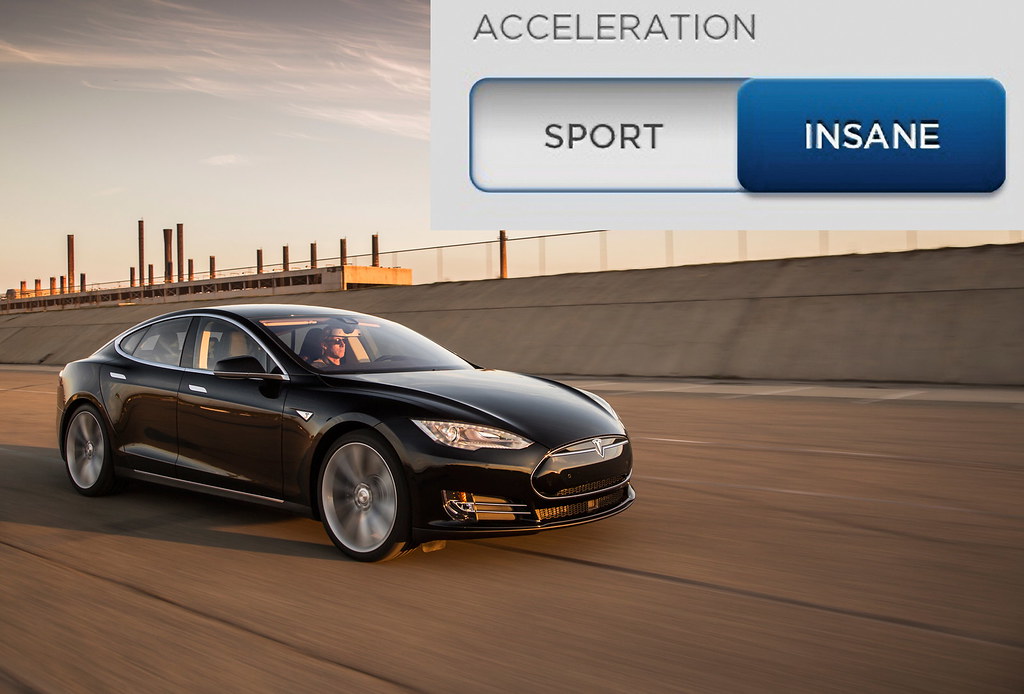
10. Acceleration Control
Unintended acceleration is a rare but potentially dangerous occurrence in vehicles, often caused by a driver mistakenly pressing the accelerator pedal with excessive force instead of the brake, particularly in stressful or unfamiliar situations. Acceleration Control systems are meticulously engineered to mitigate this specific risk, acting as a crucial safeguard, especially in confined spaces like parking garages or when an obstruction is detected directly ahead of the vehicle. This intelligent technology prevents sudden, uncontrolled forward movement, thereby actively avoiding collisions and protecting both vehicle occupants and surrounding objects or pedestrians.
Mazda’s i-ACTIVSENSE® suite prominently includes an advanced Acceleration Control feature, meticulously designed to address this specific hazard. This system actively monitors the area immediately in front of the vehicle for potential obstructions using its array of sensors. If the system detects a vehicle, a wall, or another object in its immediate path and simultaneously senses that the driver is pressing the accelerator pedal with undue force or rapidly, it intervenes automatically. This intelligent intervention is precisely calibrated to prevent a rapid, unintended acceleration that could easily lead to a frontal collision, ensuring a smoother and safer response from the vehicle.
The primary benefit of Acceleration Control is its remarkable ability to avert low-speed impacts that frequently happen in congested parking lots, narrow driveways, or during common stop-and-go traffic scenarios. For instance, if a driver attempts to pull out of a parking spot but mistakenly steps hard on the gas while another car, a pedestrian, or a solid wall is directly in front, the system can override the inappropriate input. It will then warn the driver and prevent the vehicle from surging forward uncontrollably, potentially averting costly repairs and injuries. This helps prevent not only minor dents and scratches but, more importantly, serious accidents involving vulnerable pedestrians or other vehicles.
This feature exemplifies a truly proactive and consumer-oriented approach to safety, identifying potential driver errors in real-time and providing a swift, corrective measure. By intelligently regulating throttle input when an immediate obstacle is detected, Acceleration Control significantly reduces the likelihood of preventable accidents. This makes everyday maneuvers in tight or congested urban areas considerably safer and less stressful for the driver, allowing for greater confidence and control in challenging situations.
Read more about: The Top 14 Vehicles Built to Go the Distance: Your Guide to 350,000+ Mile Reliability
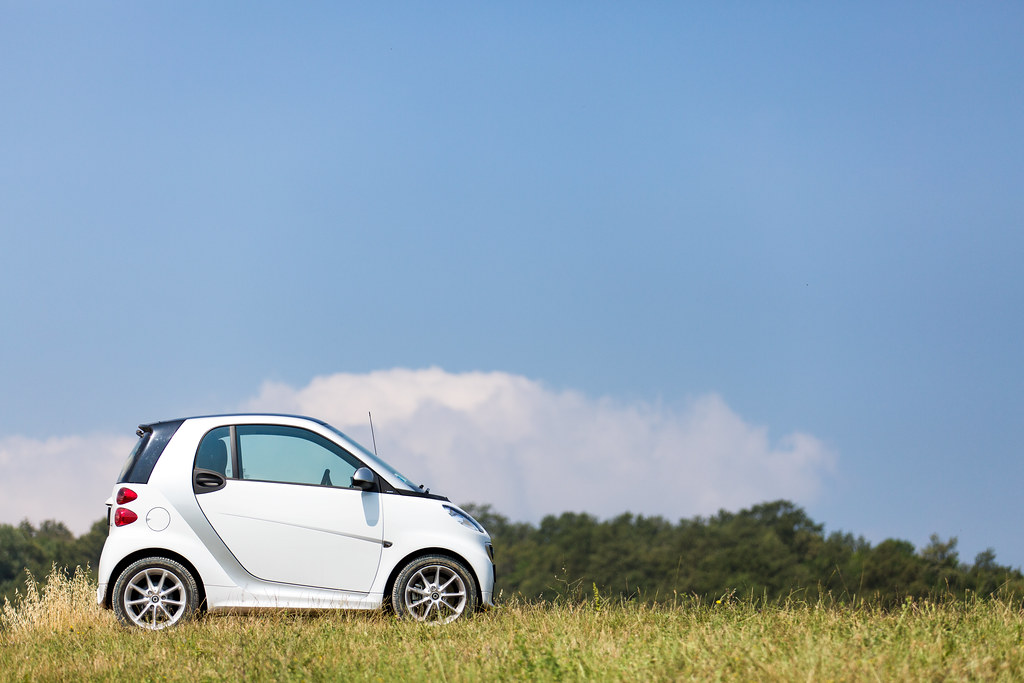
11. Remote Smart Parking Assist System (RSPAS)
While the broader concept of rearview cameras and parking assistance was touched upon earlier as a foundational safety feature, the Remote Smart Parking Assist System (RSPAS) merits a deeper, dedicated exploration due to its unique, advanced capabilities and the significantly enhanced level of autonomy it offers. This cutting-edge system elevates the often-stressful act of parking from a manual chore to a semi-autonomous operation, ingeniously allowing drivers to exit their vehicle and meticulously control its parking maneuvers remotely. This particular functionality proves invaluable in extremely tight parking spaces where opening doors wide enough for comfortable entry or exit might otherwise be impossible.
Huyndai’s SmartSense Technology proudly features RSPAS as a pinnacle of its safety and convenience innovations, showcasing a sophisticated blend of advanced hardware and intelligent software algorithms. The system leverages a comprehensive array of front radar sensors working in concert with a high-resolution windshield-mounted camera. These components meticulously scan the vehicle’s immediate surroundings, creating a detailed, real-time environmental map that allows the system to precisely detect stationary objects and moving obstacles, and critically assess potential collision risks, not just in front but around the vehicle as it autonomously maneuvers.
A key and profoundly beneficial aspect of RSPAS is its robust, enhanced layer of protection, which is active during both traditional parking maneuvers and the more advanced automated scenarios it facilitates. When the system detects a potential collision with any object—be it another parked vehicle, an unforgiving concrete pillar, a curb, or even an unsuspecting pedestrian—while the vehicle is either parking autonomously or being maneuvered remotely by the driver, it is rigorously programmed to automatically apply the brakes. This autonomous braking capability serves as a critical fail-safe, swiftly intervening to prevent impacts that might otherwise occur due to driver oversight, misjudgment, or unforeseen circumstances, especially when operating the vehicle from outside.
The truly revolutionary “remote smart” aspect of RSPAS allows drivers to stand safely outside the vehicle and use their key fob or, in some cases, a dedicated smartphone application to command the car to meticulously pull into or out of a challenging parking spot. This feature is particularly invaluable in cramped garages where vehicle doors cannot be fully opened, or in bustling urban parking lots where space is at an absolute premium. Imagine the ease of effortlessly guiding your vehicle into a snug parallel or perpendicular spot without the worry of dinging your doors or those of an adjacent vehicle, all while observing from a safe vantage point. This unprecedented level of convenience, combined with its robust, active collision prevention, truly redefines the entire parking experience for the modern driver.
RSPAS is not just about delivering unparalleled convenience; it stands as a clear testament to the comprehensive safety commitment embedded within Hyundai’s SmartSense philosophy. By significantly reducing the physical interaction and manual effort required for challenging parking scenarios, it inherently minimizes the risk of human error, making what can often be a stressful, time-consuming, and potentially hazardous maneuver considerably safer and more accessible to a wider range of drivers. It empowers drivers with an unprecedented level of control and confidence, showcasing the ongoing evolution of driver assistance beyond mere warnings to sophisticated, active, and intelligent vehicle management systems.
As we’ve journeyed through these cutting-edge safety features, from foundational accident prevention to advanced driver-assistance systems, it becomes abundantly clear that modern vehicle technology is not merely an optional amenity but a fundamental shift towards a safer driving paradigm. From intelligent systems that monitor the road ahead and around us, to those that ensure no precious cargo is forgotten, and even features that simplify the most challenging parking maneuvers, today’s cars are truly guardians on wheels. The relentless pursuit of innovation by leading automakers like Honda, Mazda, Hyundai, BMW, and Ford continues to redefine what’s possible, promising a future where every journey is not just a destination, but a testament to unparalleled safety and unwavering peace of mind. These advancements empower drivers with enhanced awareness and control, actively mitigate risks, and ultimately, save lives, solidifying the promise of safer roads for all.



